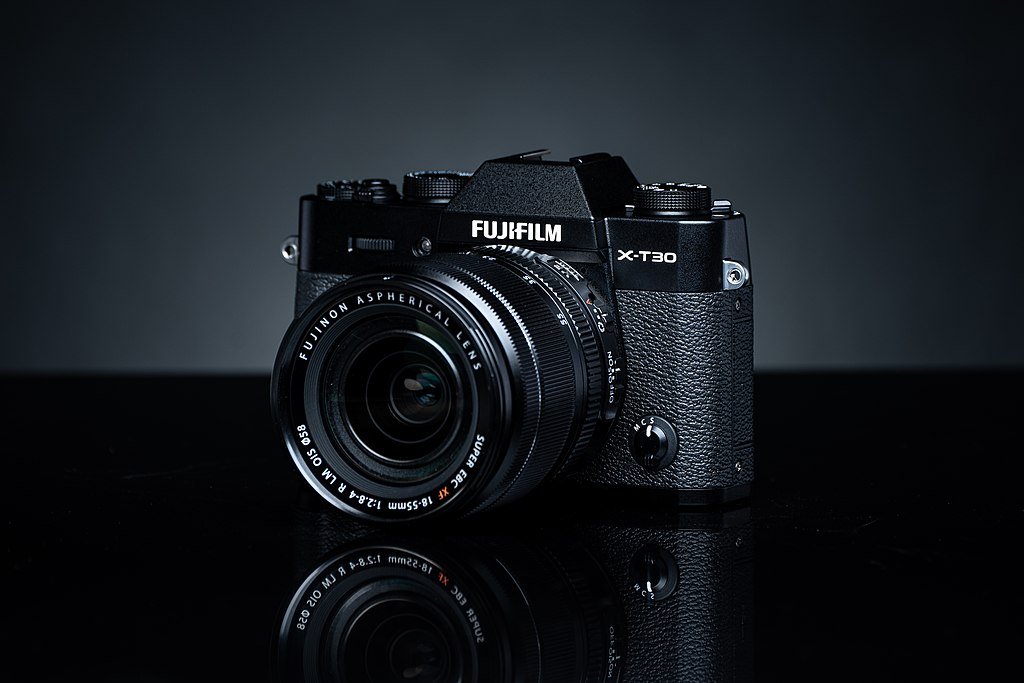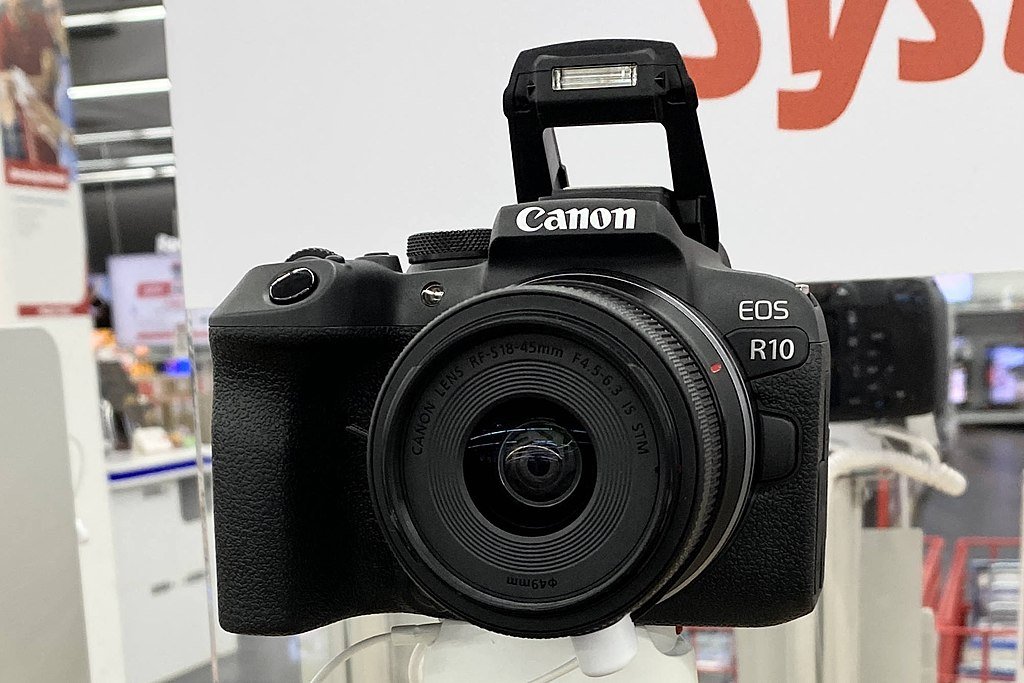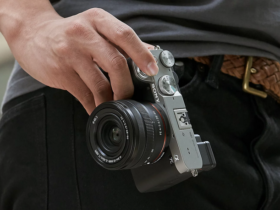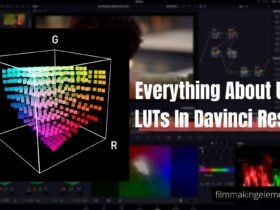Welcome to our comprehensive guide on the Top 5 Sony A6400 Alternatives! The Sony A6400 has been a game-changer in the world of mirrorless cameras, offering stunning image quality, lightning-fast autofocus, and impressive video capabilities. However, if you’re looking for something different or want to explore more options before making your decision, this guide is for you.
We have carefully analyzed and compared various models across multiple brands to present you with five outstanding alternatives to the Sony A6400, each with its own unique features and advantages. So, buckle up and get ready to dive into the world of photography and videography with these exceptional mirrorless cameras.
1. Nikon Z50

When searching for a high-quality mirrorless camera, the Sony A6400 is often a top choice. However, the Nikon Z50 serves as an excellent alternative, offering a competitive set of features and performance at a similar price point.
Sensor Full frame or APSC
Both the Sony A6400 and Nikon Z50 feature APS-C sensors. The A6400 has a slightly higher resolution of 24.2 MP, while the Z50 has 20.9 MP. The difference in resolution is minimal, but the A6400 may have a slight advantage in capturing more detailed images. However, the Z50 still delivers high-quality photos with its 20.9 MP sensor.
Autofocus
The Sony A6400 boasts an impressive 425 phase-detection and 425 contrast-detection autofocus points, while the Nikon Z50 has 209 phase-detection autofocus points. The A6400 may have an edge in autofocus performance, but the Z50’s autofocus system is still fast, accurate, and reliable for various shooting situations.
Speed
Both cameras offer a maximum continuous shooting speed of 11 fps. This speed is suitable for capturing fast-moving subjects or action photography. With similar continuous shooting capabilities, the Nikon Z50 holds its ground as a good alternative to the Sony A6400.
Design
Dimension and Weight Comparison: The Nikon Z50 is slightly larger and heavier than the Sony A6400. The Z50 measures 4.98 x 3.68 x 2.36 inches and weighs 13.93 oz, while the A6400 measures 4.7 x 2.6 x 2.4 inches and weighs 14.22 oz. The size difference is minimal, but the Z50 has a more substantial grip, which may provide better ergonomics and handling for some users.
Viewfinder and LCD monitor
Both cameras feature electronic viewfinders and tilting touchscreen LCD monitors. The Z50 has a 3.2-inch, 1,040,000-dot screen, while the A6400 has a 3.0-inch, 921,600-dot screen. The Z50’s larger, higher-resolution screen offers a better viewing experience for composing and reviewing images.
Battery life
The Nikon Z50 has a slight advantage in battery life, offering approximately 300 shots per charge, compared to the Sony A6400’s 360 shots. While neither camera has a particularly long battery life, the Z50’s additional shots may be beneficial in extended shooting sessions.
Video Capabilities
Both cameras offer 4K UHD video recording. The Nikon Z50 provides 4K video at up to 30 fps, while the Sony A6400 offers 4K video at up to 24 fps. Additionally, both cameras provide Full HD video at various frame rates. The Z50’s higher frame rate in 4K video may be an advantage for some users, especially when capturing action or fast-moving subjects.
Lens Mount and Availability
The Nikon Z50 uses the Nikon Z mount, while the Sony A6400 uses the Sony E mount. Although Sony’s E-mount system has a more extensive selection of native lenses, the Nikon Z system is growing, and there are already many high-quality lenses available. Additionally, with adapters, you can use a wide range of Nikon F-mount lenses on the Z50.
Price
Both cameras are priced similarly, at around $900. Given the comparable price, the choice between the Sony A6400 and Nikon Z50 comes down to personal preferences and specific needs.
2. Fujifilm X-T30 II

If you are considering purchasing the Sony Alpha 6400, it is essential to explore alternatives that might offer similar or better features for the same price range. One such alternative is the Fujifilm X-T30 II, which has been well received by photographers and enthusiasts alike. Both cameras are priced at $900 and cater to a similar audience, but they have their unique features and specifications.
Sensor – Full frame or APSC
Both the Sony A6400 and Fujifilm X-T30 II feature APS-C sized sensors. The A6400 has an effective 24.2-megapixel resolution, while the X-T30 II has a slightly higher resolution of 26.1 megapixels. This difference in resolution may not be significant for most photographers, but it can provide slightly more detailed images in certain situations.
Autofocus
Both cameras boast impressive autofocus systems. The Sony A6400 comes with a 425-point phase-detection and 425-point contrast-detection autofocus system, ensuring fast and accurate focusing. Similarly, the Fujifilm X-T30 II also features a 425-point phase-detection autofocus system, providing quick and reliable focusing performance. Both systems have excellent low-light sensitivity, making them suitable for various shooting scenarios.
Speed
The Sony A6400 offers continuous shooting at up to 11 fps, while the Fujifilm X-T30 II can achieve a maximum of 30 fps using its electronic shutter. However, this higher frame rate is limited to 29 JPEG or 17 RAW frames, whereas the A6400 can capture up to 46 RAW or 116 JPEG frames in a burst. Depending on your shooting needs, the X-T30 II might provide an advantage in capturing fast-moving subjects.
Design – Dimension and Weight Comparison
Both cameras have compact and lightweight designs. The Sony A6400 measures 4.7 x 2.6 x 2.4 inches and weighs 403 grams with battery and recording media, while the Fujifilm X-T30 II measures 4.7 x 3.3 x 1.8 inches and weighs 378 grams with battery and recording media. The slight difference in weight and size might not be a significant factor for most users, but the Fujifilm X-T30 II’s slightly smaller and lighter design could be preferable for extended shooting sessions.
Viewfinder and LCD monitor
The Sony A6400 and Fujifilm X-T30 II both have built-in electronic viewfinders (EVF) with similar specifications. The A6400 has a 0.39-inch EVF with 2,359,296-dot resolution, while the X-T30 II features a 0.39-inch EVF with a slightly higher resolution of 2,360,000 dots. The A6400 has a 3.0-inch tilting touchscreen LCD with 921,600-dot resolution, whereas the X-T30 II comes with a 3.0-inch tilting touchscreen LCD with a higher 1,620,000-dot resolution, providing a clearer and more detailed display.
Battery life
The Sony A6400 uses the NP-FW50 battery, which provides an estimated 360 shots per charge. On the other hand, the Fujifilm X-T30 II uses the NP-W126S battery, which offers around 380 shots per charge. Although the difference in battery life is not substantial, the X-T30 II does provide a slight edge in terms of shooting capacity.
Video Capabilities
Both the Sony A6400 and the Fujifilm X-T30 II offer impressive video capabilities. The Sony A6400 can shoot 4K video at up to 30 fps and Full HD at up to 120 fps. The Fujifilm X-T30 II can shoot 4K video at up to 30 fps and Full HD at up to 240 fps. Both cameras offer external microphone inputs, but only the Fujifilm X-T30 II offers a headphone jack, which is useful for monitoring audio during recording.
In terms of recording formats, the Sony A6400 offers XAVC S and AVCHD, while the Fujifilm X-T30 II offers H.264/MOV/MP4/MPEG-4. Both cameras can output 4:2:2 10-bit video via HDMI, which is useful for professional workflows.
Lens Mount and Availability
The Sony A6400 features a Sony E-mount, which offers a large selection of lenses from Sony and third-party manufacturers. The Fujifilm X-T30 II features a Fujifilm X-mount, which also offers a wide range of lenses from Fujifilm and third-party manufacturers. However, Sony’s lens lineup is more extensive, with a wider variety of options, including more high-end lenses.
Price
Both the Sony A6400 and the Fujifilm X-T30 II have a similar price point, with both cameras being priced at around $900. However, the Fujifilm X-T30 II offers slightly better features for the price, such as the higher resolution EVF and better video capabilities.
3. Sony ZV-E10

Sony has recently launched its latest entry-level mirrorless camera, the Sony ZV-E10, which offers a good alternative to the Sony A6400. While both cameras are aimed at beginner and intermediate photographers, some key differences set them apart. In this article, we will compare and contrast the two cameras in terms of their sensor, autofocus, speed, design, viewfinder and LCD monitor, battery life, video capabilities, lens mount and availability, and price.
Sensor Full frame or APSC
Both the Sony A6400 and ZV-E10 come with the same APS-C sensor, offering an effective resolution of 24.2 megapixels. While the A6400 has a larger 23.5 x 15.6 mm sensor, the ZV-E10’s sensor is still sufficient for producing high-quality images. The crop factor on both cameras is 1.5x, which means the lenses will provide a 35mm equivalent focal length.
Autofocus
The Sony A6400 has a hybrid autofocus system with 425 phase-detection and 425 contrast-detection points, which provides fast and accurate autofocus. The ZV-E10 comes with the same autofocus system as the A6400, offering real-time autofocus and tracking. However, the ZV-E10 has improved animal tracking, which makes it easier to capture footage of pets and other animals.
Speed
Both cameras offer fast continuous shooting speeds, with the A6400 capable of shooting up to 11 frames per second (fps) in RAW format and 116 fps in JPEG format. The ZV-E10 has the same continuous shooting speed of 11 fps in RAW format and 116 fps in JPEG format.
Design
Dimension and Weight Comparison: In terms of design, the Sony ZV-E10 is more compact and lightweight compared to the Sony A6400. The ZV-E10 weighs 12.1 oz and has dimensions of 4.5 x 2.5 x 1.8″, making it easier to handle and carry around. In contrast, the A6400 weighs 14.22 oz and has dimensions of 4.7 x 2.6 x 2.4″. Although the size and weight difference may not be significant, the ZV-E10’s compact size makes it easier to use for extended periods.
Viewfinder and LCD monitor
The Sony A6400 has a built-in electronic viewfinder (EVF) with a resolution of 2,359,296 dots, providing a clear and detailed view of the scene. The ZV-E10 has a smaller, 0.39-inch EVF with the same resolution as the A6400. However, the ZV-E10’s LCD monitor is larger and can be rotated and tilted, making it easier to take selfies and vlogs.
Battery Life
The Sony ZV-E10 and A6400 both use the same NP-FW50 battery, which has a capacity of 1020mAh. However, the ZV-E10 boasts a slightly better battery life than the A6400. The ZV-E10 can capture up to 440 still images per charge, while the A6400 can only capture up to 410 images per charge. When it comes to video recording, the ZV-E10 can record up to 125 minutes of footage, while the A6400 can only record up to 105 minutes.
Video Capabilities
Both the Sony ZV-E10 and A6400 are capable of capturing high-quality video. They both offer 4K video recording at up to 30 frames per second and 1080p video recording at up to 120 frames per second. The ZV-E10, however, has a few additional video features that are specifically designed for vloggers and content creators. For instance, it has a “Product Showcase” mode, which automatically adjusts focus from the face to an object that is being shown to the camera. It also has a “Background Defocus” mode, which adds a blurred background effect to your footage.
Lens Mount and Availability
Both cameras use the Sony E-mount, which means they are compatible with a wide range of Sony lenses. However, the ZV-E10 is designed to be used primarily with Sony’s APS-C lenses, which are more compact and lightweight than their full-frame counterparts. This is another feature that makes the ZV-E10 an excellent choice for vloggers and content creators who need a camera that is easy to carry around.
Price
The Sony ZV-E10 is priced at $800, while the A6400 is priced at $900. This makes it a slightly cheaper alternative for Sony A6400.
4. Canon EOS M50 Mark II

The Sony A6400 and the Canon EOS M50 Mark II are two highly popular mirrorless cameras. Both of them are suitable for various kinds of photography and videography applications. However, these cameras have different features, and choosing the right one for your needs can be a difficult task. In this section, we will compare the Canon EOS M50 Mark II and Sony A6400 and help you decide if it can be a good cheaper alternative for Sony A6400.
Sensor
The Canon EOS M50 Mark II comes with a 24.1-megapixel APS-C sensor, while the Sony A6400 features a 24.2-megapixel APS-C sensor. Both cameras have similar image resolution, but the Canon has a slight edge in terms of dynamic range and low light performance. Additionally, the Canon’s sensor has a Dual Pixel AF system, which allows for faster and more accurate autofocus.
Autofocus
Both cameras offer excellent autofocus capabilities, but the Sony A6400 has the edge here. It has a hybrid autofocus system with 425 phase-detection points and 425 contrast-detection points. On the other hand, the Canon EOS M50 Mark II has 143 contrast-detection AF points and 99 phase-detection AF points. However, the Canon camera has an advantage when it comes to face and eye detection, which is faster and more accurate than Sony’s.
Speed
In terms of continuous shooting, both cameras are quite capable. The Sony A6400 can shoot up to 11 frames per second (fps) in RAW format and up to 116 frames in JPEG format. The Canon EOS M50 Mark II can shoot up to 10 fps in RAW format and up to 33 frames in JPEG format. While the Sony has a slight edge, both cameras are suitable for capturing fast-moving subjects.
Design
Dimension and Weight Comparison: The Canon EOS M50 Mark II is a compact camera that measures 4.6 x 3.5 x 2.3 inches and weighs 13.7 ounces, making it slightly smaller and lighter than the Sony A6400, which measures 4.7 x 2.6 x 2.4 inches and weighs 14.22 ounces. Both cameras are lightweight and portable, making them ideal for travel and on-the-go photography.
Viewfinder and LCD monitor
Both cameras come with a built-in electronic viewfinder and a tilting touchscreen LCD monitor. However, the Sony A6400 has a higher resolution electronic viewfinder with 2,359,296 dots compared to the Canon’s viewfinder with 2,360,000 dots. In terms of LCD screen resolution, the Canon has a slight edge with 1,040,000 dots compared to Sony’s 921,600 dots. However, both screens are capable of tilting, making them suitable for capturing photos and videos from different angles.
Battery Life
The battery life is an important consideration for any camera, especially for those who plan to use it for extended periods of time or for video recording. The Sony A6400 is rated for up to 360 shots per charge with the LCD monitor and up to 410 shots per charge with the viewfinder, using the NP-FW50 rechargeable battery. On the other hand, the Canon EOS M50 Mark II is rated for up to 305 shots per charge using the LP-E12 rechargeable battery. Both cameras support USB charging, which can be a convenient option for charging on the go.
Video Capabilities
Both cameras offer good video capabilities, but there are some differences. The Sony A6400 can shoot 4K UHD video at up to 30fps and 1080p Full HD video at up to 120fps. It also offers S-Log2 and S-Log3 gamma profiles for expanded dynamic range, as well as Hybrid Log-Gamma (HLG) for HDR workflows. The Canon EOS M50 Mark II can shoot 4K UHD video at up to 24fps and 1080p Full HD video at up to 60fps. It also offers Canon’s Dual Pixel CMOS AF technology for smooth and accurate autofocus during video recording.
Lens Mount and Availability
The Sony A6400 uses the Sony E mount, which offers a wide selection of lenses from Sony as well as third-party manufacturers. The Canon EOS M50 Mark II uses the Canon EF-M mount, which has a more limited selection of lenses compared to the Sony E mount. However, Canon has been expanding their lineup of EF-M lenses in recent years and currently offers a range of options for different shooting scenarios.
Price
The Sony A6400 has a higher price tag compared to the Canon EOS M50 Mark II, with a current retail price of $900 compared to $700 for the Canon. However, it’s worth noting that the Sony A6400 offers some advanced features such as a larger buffer for continuous shooting, higher burst rate, and expanded video capabilities, which may justify the higher price for some users.
5. Canon EOS R10

Canon EOS R10 is definitely a great alternative to the Sony A6400.
Sensor- Full frame or APSC
The Canon EOS R10 has a 24.2-megapixel APS-C CMOS sensor, while the Sony A6400 features a 24.2-megapixel APS-C CMOS sensor. The Canon EOS R10 has a crop factor of 1.6x, while the Sony A6400 has a crop factor of 1.5x. The larger sensor of the Canon EOS R10 allows for better image quality, particularly in low-light conditions, while the smaller sensor of the Sony A6400 provides a narrower field of view.
Autofocus
Both cameras come equipped with advanced autofocus systems. The Canon EOS R10 has 651 phase detection autofocus points, while the Sony A6400 has 425 phase detection autofocus points. The Canon EOS R10 also has dual pixel CMOS autofocus, which allows for faster and more accurate autofocus. In comparison, the Sony A6400 uses both phase detection and contrast detection autofocus. Both cameras provide reliable autofocus performance, but the Canon EOS R10 has a slight edge when it comes to accuracy and speed.
Speed
The Canon EOS R10 has an impressive maximum continuous shooting speed of 23 fps using the electronic shutter and 15 fps using the mechanical shutter. The Sony A6400, on the other hand, has a maximum continuous shooting speed of 11 fps. The high-speed shooting capabilities of the Canon EOS R10 make it an excellent choice for capturing fast-moving subjects, such as sports and wildlife.
Design- Dimension and Weight Comparison:
The Canon EOS R10 has dimensions of 4.8 x 3.5 x 3.3 inches and weighs 13.5 ounces without the battery. The Sony A6400 has dimensions of 4.7 x 2.6 x 2.4 inches and weighs 14.22 ounces with the battery. The Canon EOS R10 is slightly bulkier than the Sony A6400 but is still compact enough to carry around easily.
Viewfinder and LCD Monitor:
The Sony A6400 features a built-in electronic viewfinder with a resolution of 2,359,296 dots and a coverage of 100%. It also has a 3.0″ tilting touchscreen LCD with a resolution of 921,600 dots. The LCD can tilt up by 180 degrees for selfies or vlogging, but it doesn’t flip around to face the front.
On the other hand, the Canon EOS R10 also features a built-in electronic viewfinder, which has a resolution of 2,360,000 dots, and a coverage of 100%. The viewfinder in the Canon EOS R10 is a bit larger than that of the Sony A6400, with a magnification of approximately 0.95x. The Canon EOS R10 also has a 3.0″ free-angle tilting touchscreen LCD with a resolution of 1,040,000 dots.
Battery Life:
The Sony A6400 uses the NP-FW50 rechargeable lithium-ion battery, which has a CIPA-rated battery life of up to 360 shots per charge. The Canon EOS R10 uses the LP-E17 rechargeable lithium-ion battery, which has a CIPA-rated battery life of up to 510 shots per charge. While the Sony A6400 battery life is not bad, the Canon EOS R10 offers much better battery life.
Video Capabilities:
The Sony A6400 can shoot UHD 4K video up to 30 frames per second, and Full HD video up to 120 frames per second. It supports both HLG and S-Log2/3 for HDR video, and has a microphone input for external audio. Additionally, it can output 4:2:2 8-bit video via HDMI.
The Canon EOS R10 can shoot UHD 4K video up to 60 frames per second, and Full HD video up to 120 frames per second. It supports HDR-PQ for HDR video and has a microphone input for external audio. It also has an HDMI output for 10-bit video recording.
Lens Mount and Availability:
The Sony A6400 uses the Sony E-mount, which has a wide range of lenses available, including Sony’s own lineup of lenses and third-party lenses from manufacturers such as Sigma and Tamron. However, the Canon EOS R10 uses the Canon RF mount, which currently has a smaller selection of lenses available. That being said, Canon is rapidly expanding its RF lens lineup, and there are already several high-quality lenses available, including the RF 24-105mm f/4L IS USM, RF 35mm f/1.8 IS Macro STM, and RF 50mm f/1.2L USM.
Price:
Both the Sony A6400 and the Canon EOS R10 are priced similarly at around $900. However, the Canon EOS R10 offers a full-frame sensor, better battery life, and a wider range of video capabilities, which makes it a better value for the price.
So there you go, that was our list of Top 5 Sony A6400 Alternatives, we curated and listed the best options. Hope you enjoyed reading it as much as we enjoyed writing it. See you!










Got a Question?
Find us on Socials or Contact us and we’ll get back to you as soon as possible.